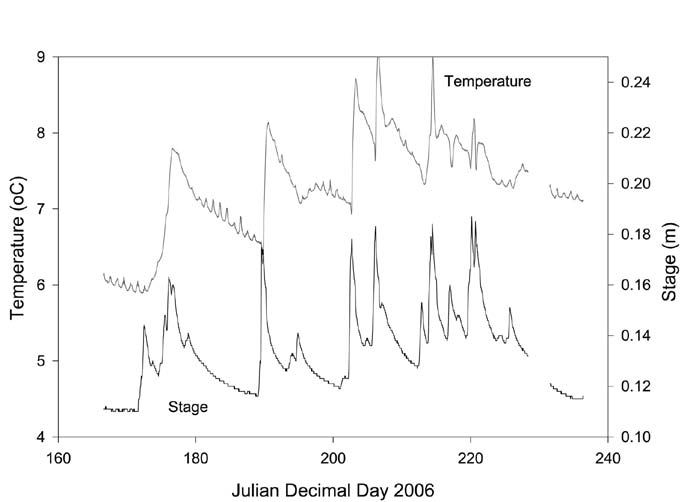From sink to resurgence: the buffering capacity of a cave system in the Tongass national forest, USA
DOI:
https://doi.org/10.3986/ac.v40i2.23Povzetek
The Tongass National Forest of Southeast Alaska, USA, provides a unique environment for monitoring the impact of the cave system on water quality and biological productivity. The accretionary terrane setting of the area has developed into a complex and heterogeneous geologic landscape which includes numerous blocks of limestone with intense karstification. During the Wisconsian glaciation, there were areas of compacted glacial sediments and silts deposited over the bedrock. Muskeg peatlands developed over these poorly drained areas. The dominant plants of the muskeg ecosystem are Sphagnum mosses, whose decomposition leads to highly acidic waters with pH as low as 2.4. These waters drain off the muskegs into the cave systems, eventually running to the ocean. In accordance with the Tongass Land Management Plan, one of the research priorities of the National Forest is to determine the contributions of karst groundwater systems to productivity of aquatic communities. On Northern Prince of Wales Island, the Conk Canyon Cave insurgence and the Mop Spring resurgence were continuously monitored to understand the buffering capacity of the cave system. Over the length of the system, the pH increases from an average 3.89 to 7.22. The insurgence water temperature, during the summer months, ranged from between 10oC to 17oC. After residence in the cave system, the resurgence water had been buffered to 6oC to 9oC. Over the continuum from insurgence to resurgence, the specific conductance had increased by an order of magnitude with the resurgence waters having a higher ionic strength. The cave environment acts as a buffer on the incoming acidic muskeg water to yield resurgence water chemistry of a buffered karst system. These buffered waters contribute to the productivity in aquatic environments downstream. The waters from this system drain into Whale Pass, an important location for the salmon industry. The cool, even temperatures, as well as buffered flow rates delivered by the karst systems are associated with higher productivity of juvenile coho salmon.
Prenosi

Prenosi
Objavljeno
Kako citirati
Številka
Rubrike
Licenca
Avtorji jamčijo, da je delo njihova avtorska stvaritev, da v njem niso kršene avtorske pravice tretjih oseb ali kake druge pravice. V primeru zahtevkov tretjih oseb se avtorji zavezujejo, da bodo varovali interese založnika ter da bodo povrnili morebitno škodo.
Podrobneje v rubriki: Prispevki




